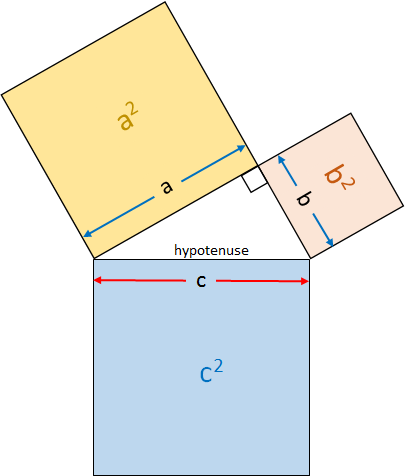This calculator gives you the ability to calculate the length of one of the sides of a right triangle, given the length of the other two sides.
Description
The Pythagorean Theorem1 applies to right triangles and allows us to calculate the length of any one side of a right triangle given the lengths of the other two sides. It is based on the fundamental relationship: c2=a2+b2, where c is the hypotenuse of the right triangle and a and b are the sides adjacent to the hypotenuse.
Usage
Because we live in a world where the geometry of gravity paints right triangles on everything, the Pythagorean theorem is central to an innumerable set of equations that describe phenomena we see and feel every day. Objects rolling or sliding down a plane are moving down the hypotenuse of a right triangle formed with the local horizontal plane and the vector of gravity. The pendulum motion of a swinging wrecking ball translates its component forces into a right triangle with one side of the triangle being the force of gravity. The shadow cast from a tree or a building forms a right triangle with the distance from the foot of the building.
See also
Pythagorean Theorem [multiple proofs]
Square Root of Two - common case where sides adjacent to hypotenuse are both of length 1.
Pythagorean Theorem - Khan Academy video